The System Tray Overflow Menu—also known as the 'Taskbar Corner Overflow' or 'Hidden Icons Menu'—is situated at the bottom-right corner of your Windows 11 desktop. This menu provides quick access to applications and features that frequently run in the background, such as Microsoft OneDrive, antivirus software, Bluetooth devices, and more.
While it's possible to customize which icons appear in the system tray, Windows 11 now allows you to show or completely hide the entire System Tray Overflow Menu from the taskbar. If you've upgraded to Windows 11 version 22H2 or later, you can control the visibility of the System Tray Overflow Menu. Here's how you can do it.
Hide or Show the System Tray Overflow Menu in Windows 11
Many running applications and system processes are tucked away in the System Tray Overflow Menu, accessible by clicking the up arrow icon at the far right of the taskbar. With the September 22H2 update of Windows 11, a new option allows you to remove this menu entirely from the taskbar notification area. Follow these steps to hide the System Tray Overflow Menu:
- Open Windows Settings by clicking the Start button and selecting Settings. Alternatively, press
Win+Ito open Settings directly.
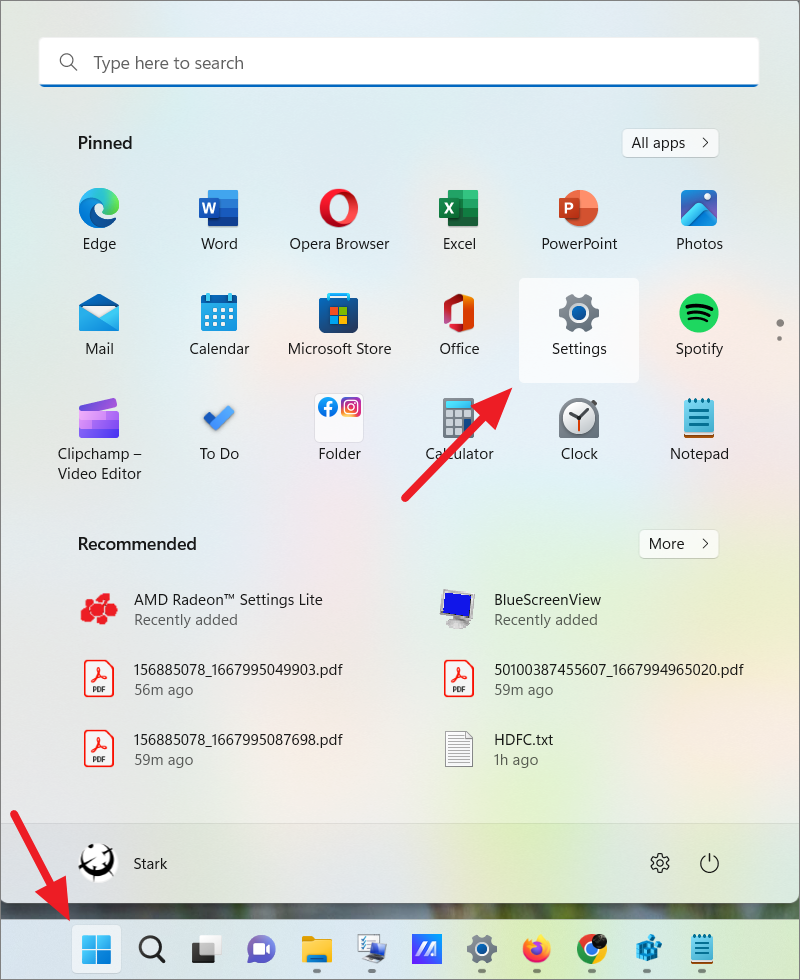
- In the Settings window, navigate to the Personalization section from the left sidebar, then select Taskbar from the options on the right.
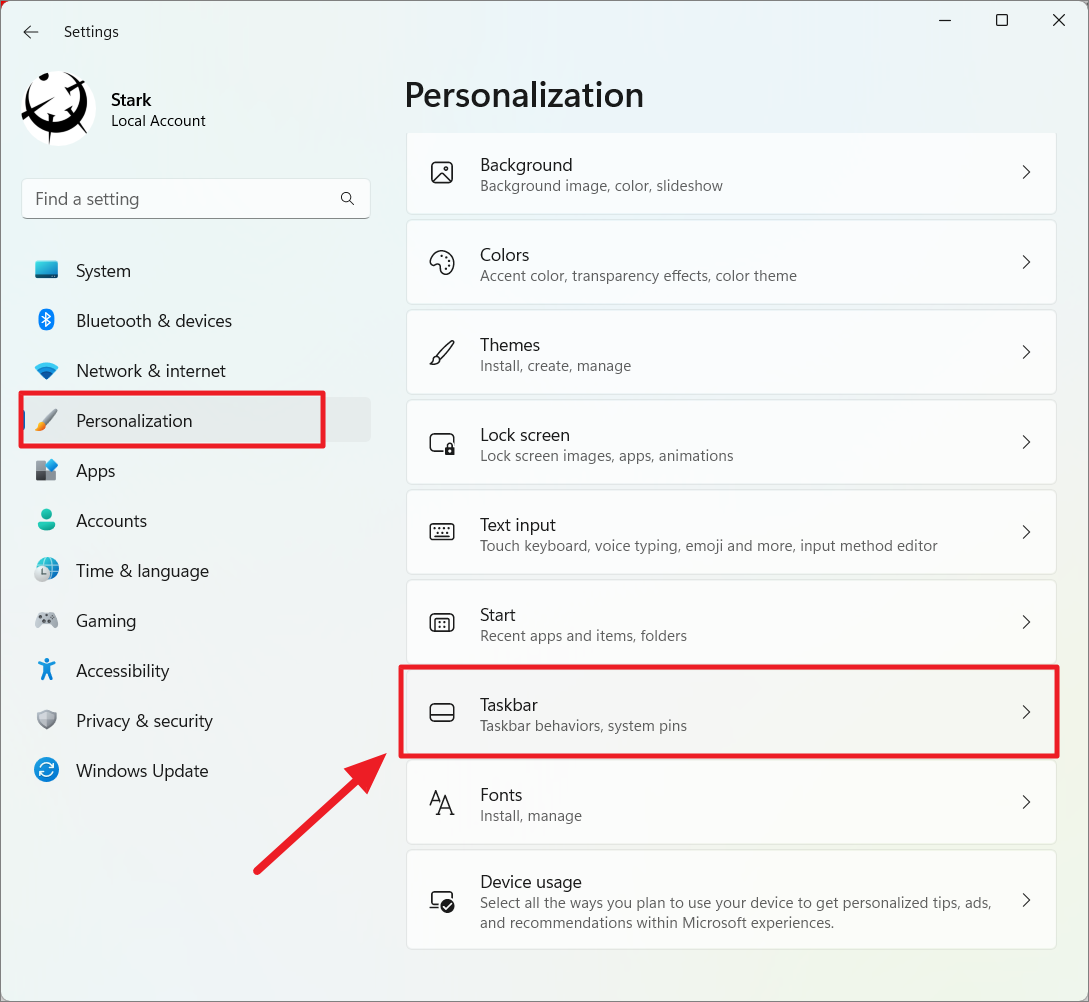
- Alternatively, right-click on an empty area of the taskbar and choose Taskbar settings from the context menu.
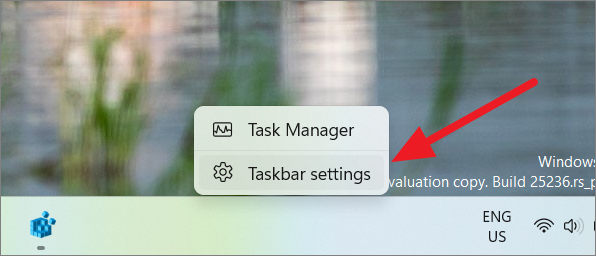
- Scroll down within the Taskbar settings and click on Other system tray icons to expand the options.
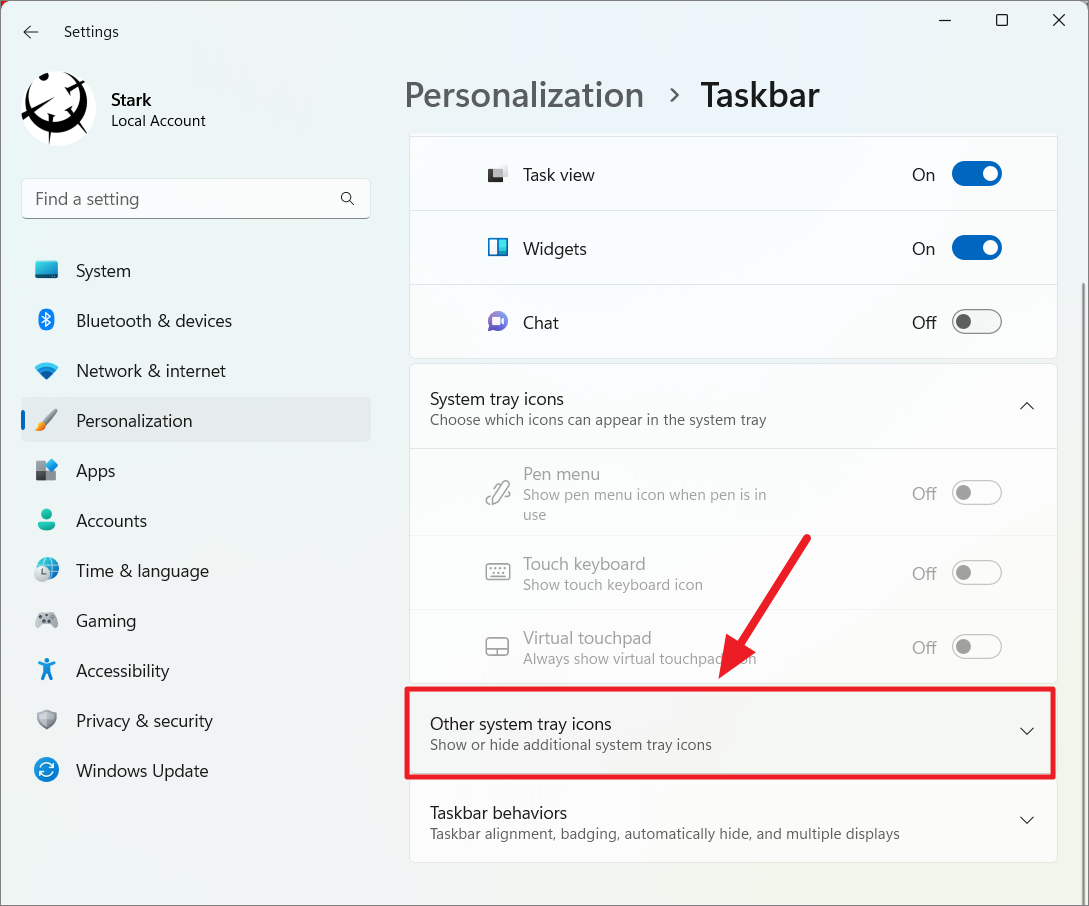
- To hide the System Tray Overflow Menu, toggle the switch next to Hidden icon menu to the Off position.
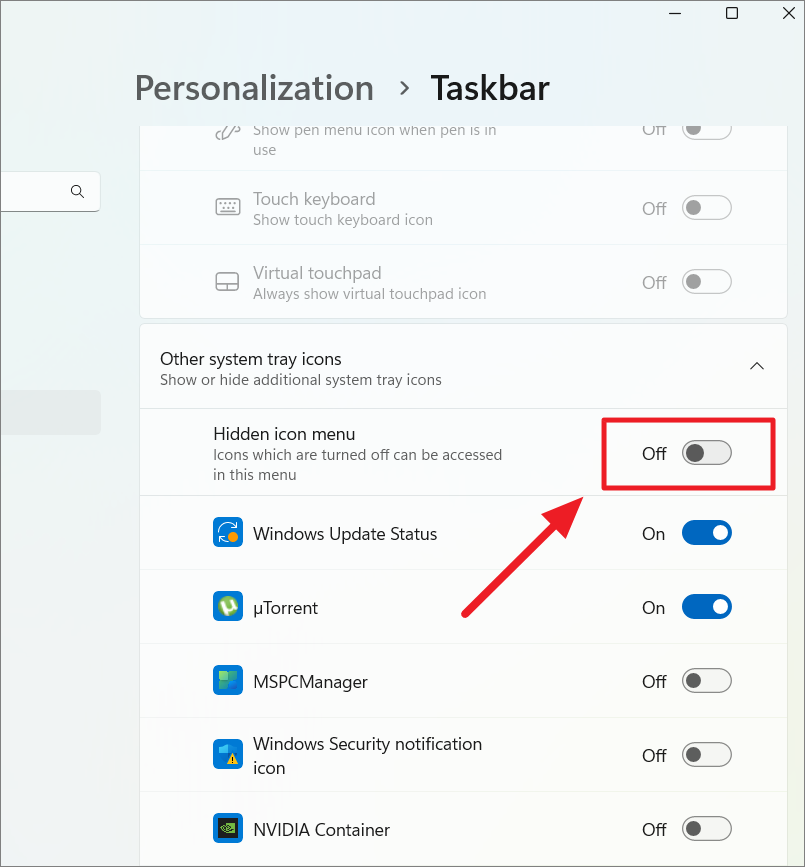
Once you turn off the Hidden icon menu, the up arrow representing the System Tray Overflow Menu will disappear from the taskbar, along with all the icons it contained.
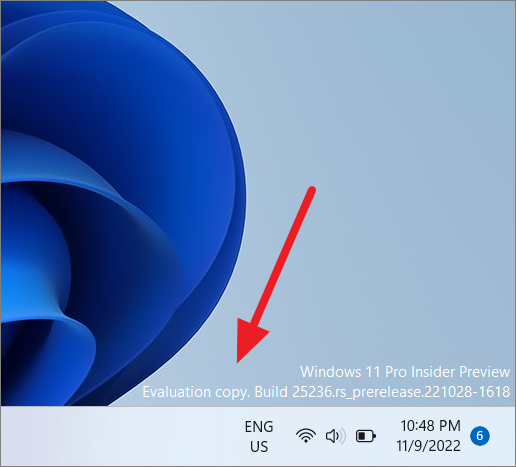
If you wish to bring back the System Tray Overflow Menu, simply toggle the Hidden icon menu switch back to On.

Show System Tray Icons Without the Overflow Menu
Certain icons, such as 'Safely Remove Hardware', 'OneDrive status', and 'Windows Security', are essential to access directly from the taskbar. If you prefer to hide the System Tray Overflow Menu but still want specific icons to appear on your taskbar, follow these steps:
- Right-click an empty space on the taskbar and select Taskbar settings.

- In the Taskbar settings, click on Other system tray icons to expand the section.
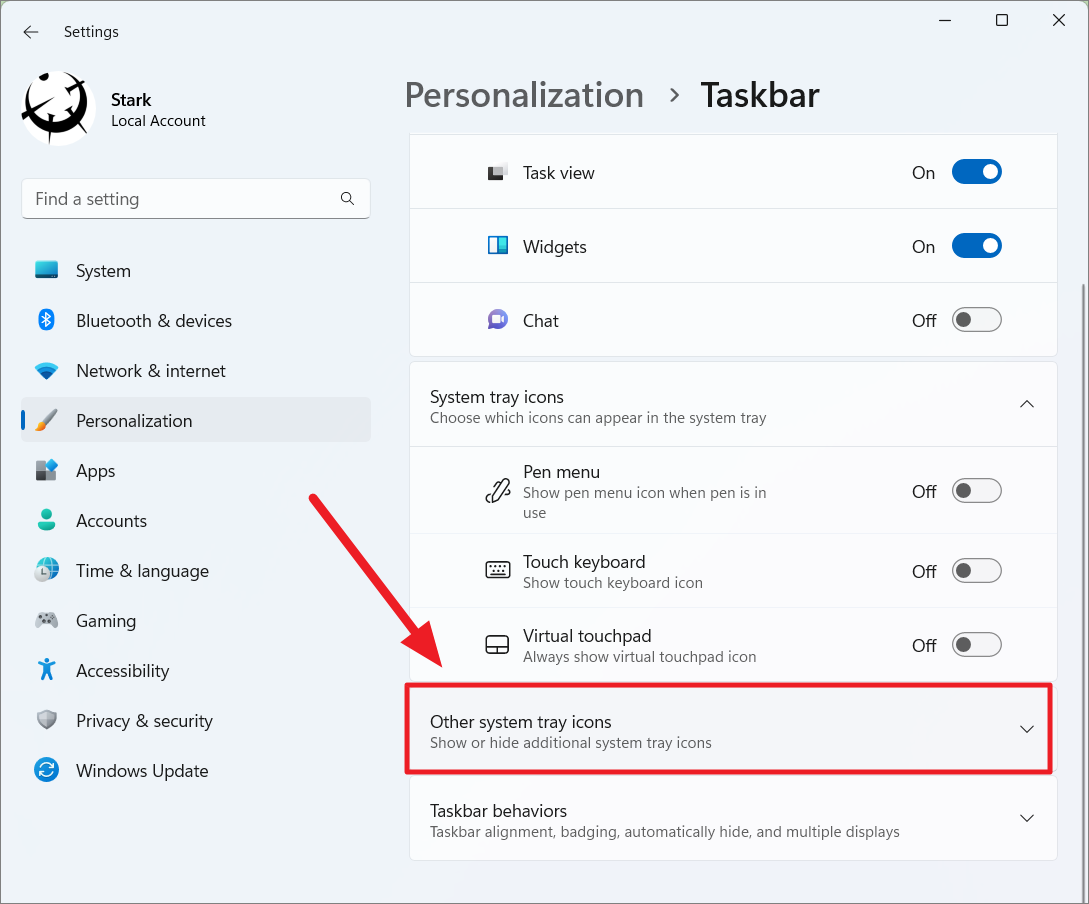
- Toggle the Hidden icon menu switch to Off to hide the System Tray Overflow Menu.

- In the list below, turn on the switches next to the apps or system icons you want to display on the taskbar.
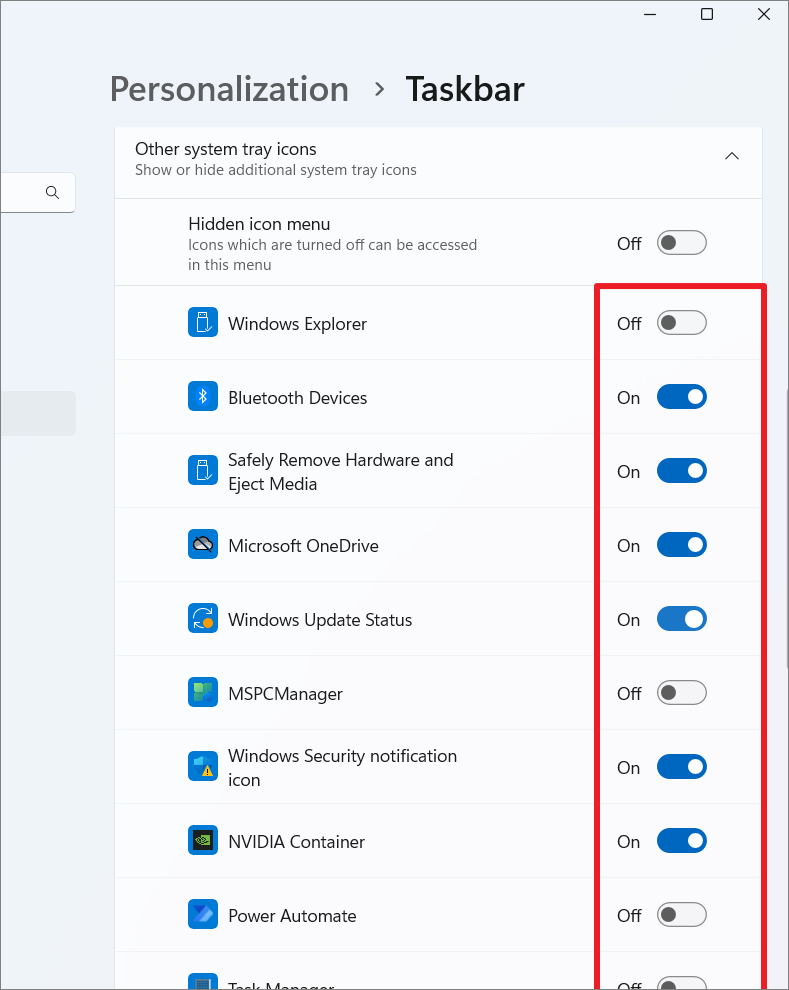
The selected icons will now appear directly on the taskbar notification area, while the System Tray Overflow Menu remains hidden.

Display System Tray Icons Using Drag and Drop
Another convenient way to manage which icons appear on your taskbar is by using drag and drop:
- Click the up arrow icon to open the System Tray Overflow Menu.
- Click and hold the icon you wish to display on the taskbar.
- Drag the icon out of the overflow menu and drop it onto the taskbar.
This method allows you to quickly move important icons to the taskbar for easy access.

You can effortlessly rearrange and organize your system tray icons to suit your preferences.

By following these methods, you can customize your taskbar to show only the system tray icons you need and declutter your desktop environment.


